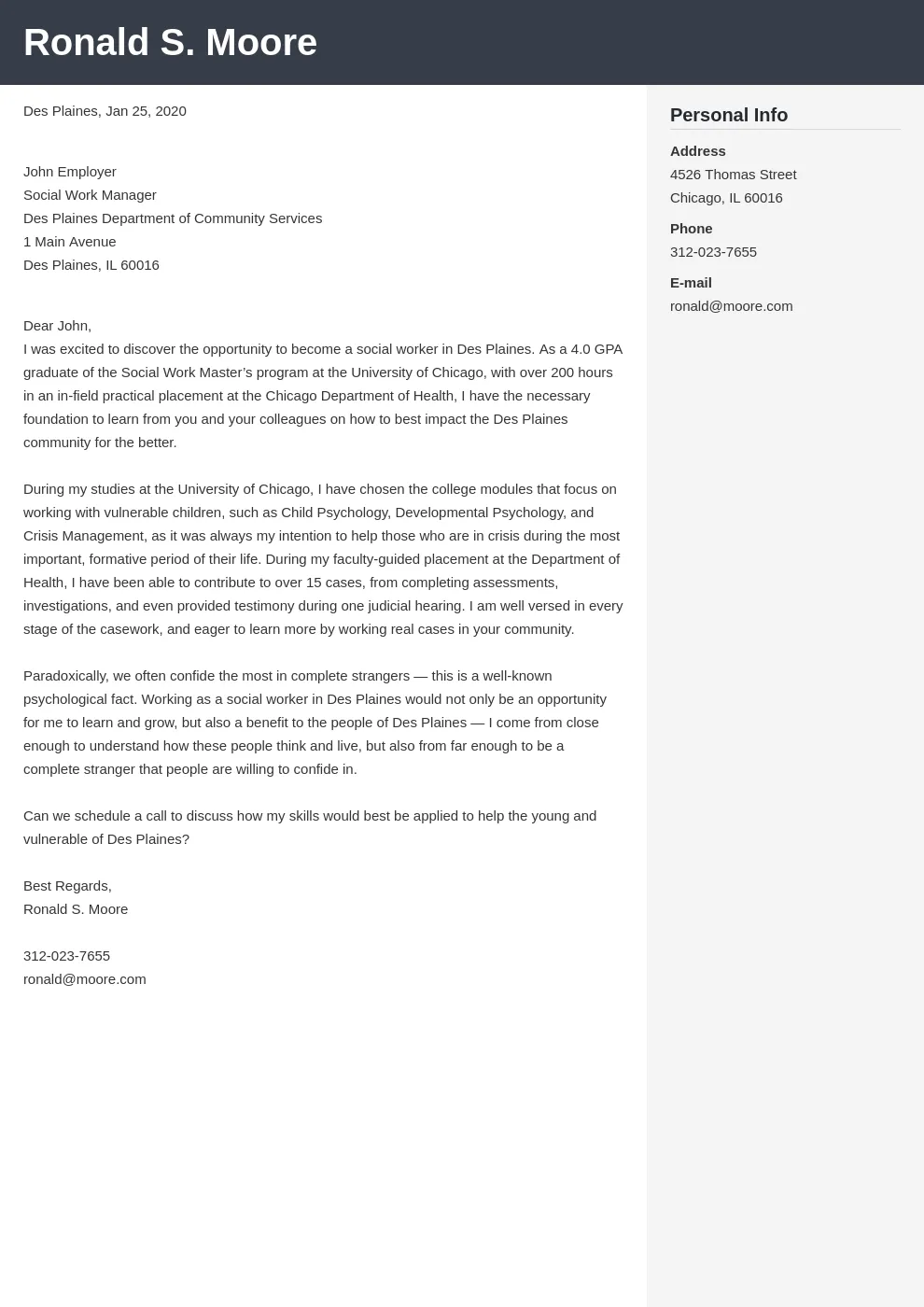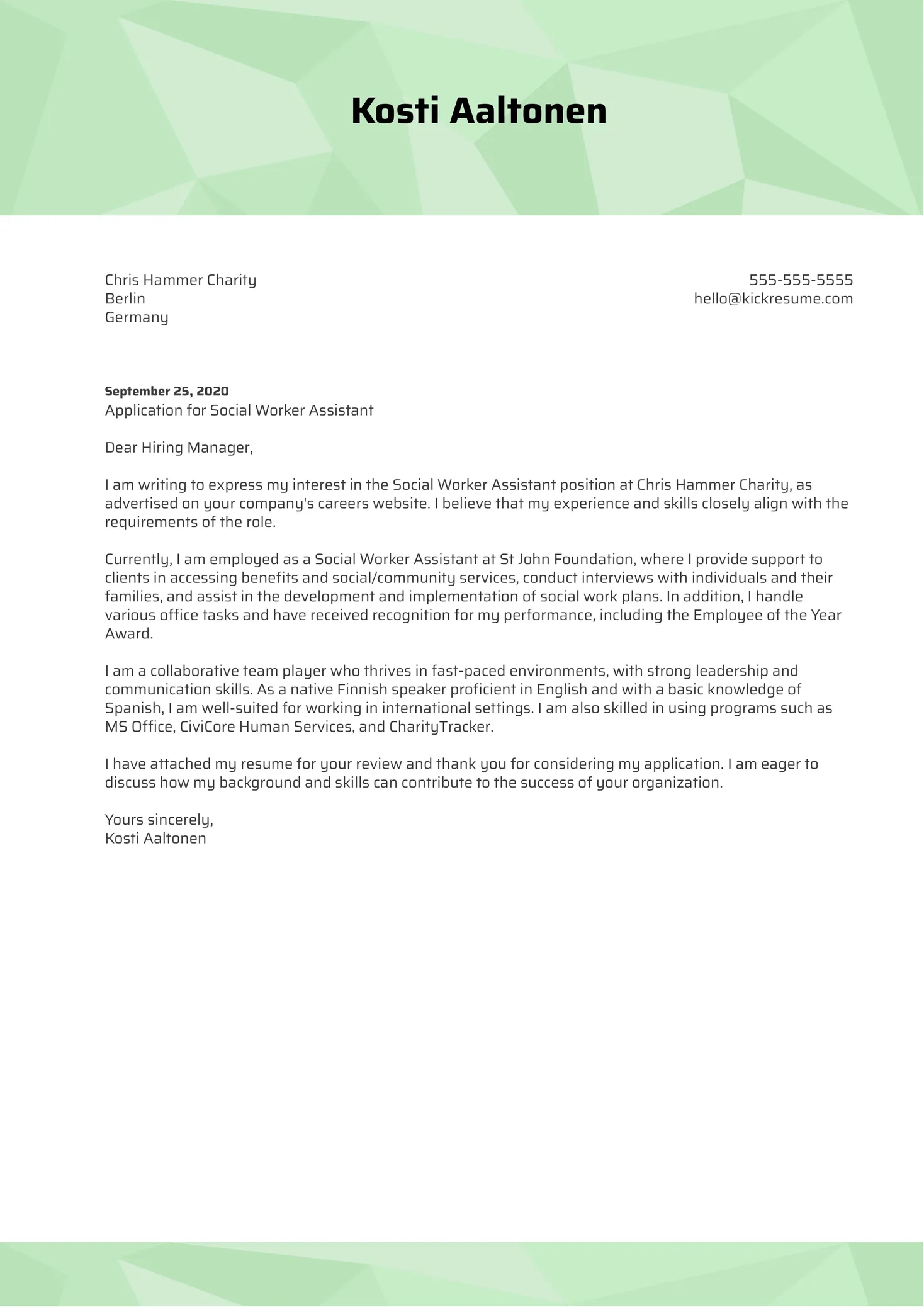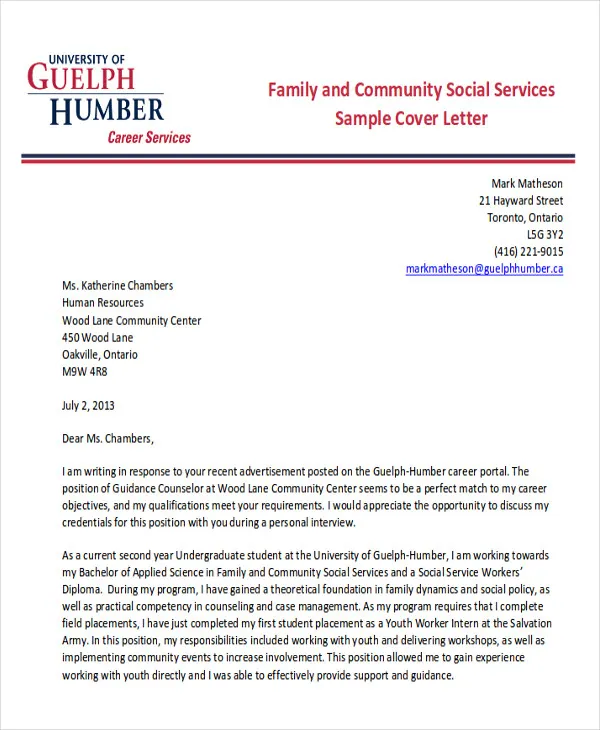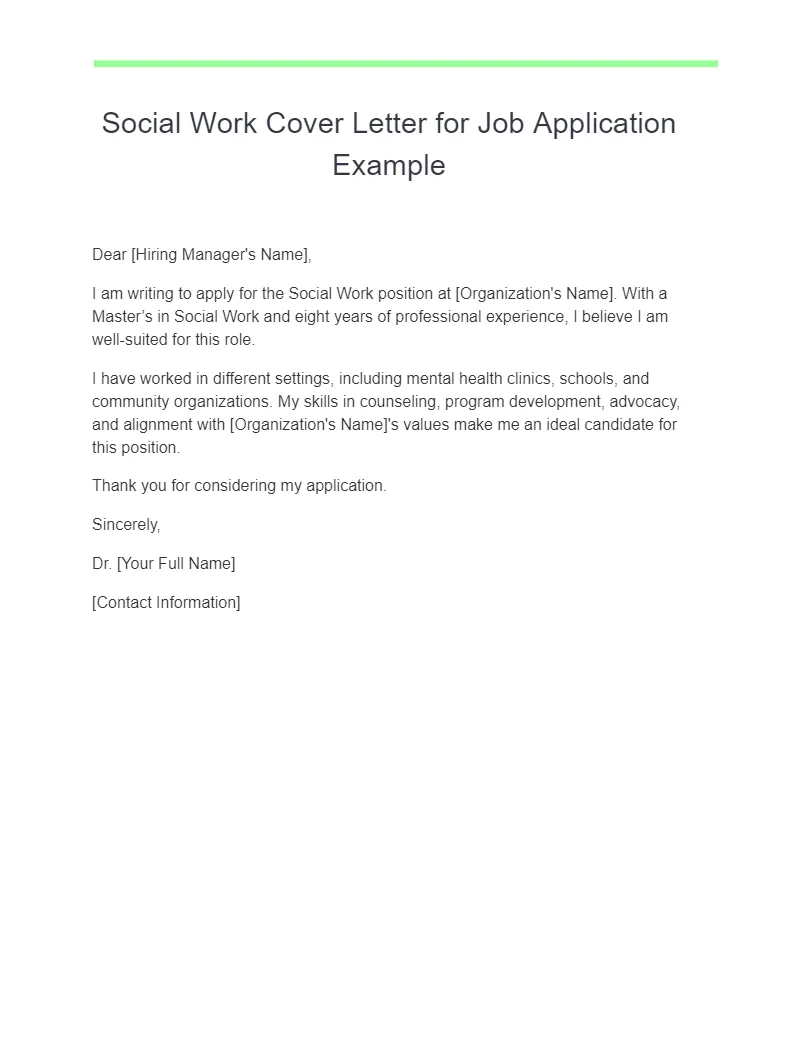Cover Letter for Social Services Why Is It Important
In the competitive field of social services, a well-crafted cover letter is your first opportunity to make a strong impression on potential employers. It’s more than just a formality; it’s a crucial tool for showcasing your passion, skills, and experience in a way that your resume alone cannot. A compelling cover letter can set you apart from other candidates and increase your chances of securing an interview. It allows you to explain why you are the ideal candidate and how your unique qualifications align with the specific requirements of the job. A cover letter is a narrative that connects your past experiences to the future opportunity, demonstrating your understanding of the role and your commitment to the field. Therefore, investing time in writing a thoughtful and personalized cover letter is essential for career success in social services.
Highlighting Your Skills and Experience
Your cover letter should highlight the skills and experiences that are most relevant to the social services position you are applying for. Begin by carefully reviewing the job description and identifying the key requirements, skills, and qualifications the employer is seeking. Then, tailor your cover letter to directly address these points. For example, if the job description emphasizes the need for strong communication skills, provide specific examples from your previous experience where you effectively communicated with clients, colleagues, or community members. Similarly, if the role requires experience with case management, be sure to mention your relevant experience in this area, detailing the specific tasks you performed and the positive outcomes you achieved. By clearly demonstrating how your skills and experience align with the job requirements, you make it easy for the hiring manager to see you as a strong fit for the role. It’s about showing, not just telling, and bringing your experiences to life for the reader.
Relevant Social Services Experience

When discussing your social services experience, focus on the specific roles and responsibilities you held. Detail the types of clients you worked with, the programs you were involved in, and the tasks you performed. For instance, if you have experience in direct client care, describe the interventions you provided, such as counseling, crisis intervention, or advocacy. If you have experience in program development or management, explain your role in planning, implementing, and evaluating programs. Quantify your achievements whenever possible; for example, mention the number of clients you served, the percentage increase in program effectiveness, or any successful outcomes you achieved. Providing concrete examples and data will make your experience more compelling and demonstrate your ability to make a tangible impact in a social services setting.
Transferable Skills and Abilities
Even if you’re new to social services, transferable skills from other fields can be incredibly valuable. These include communication, empathy, problem-solving, organizational skills, and the ability to work collaboratively. Highlight these skills and provide examples of how you have demonstrated them in previous roles or experiences. For instance, if you have a background in customer service, you can emphasize your communication skills, your ability to build rapport, and your experience in resolving conflicts. If you have experience in project management, you can showcase your organizational skills and your ability to manage multiple tasks simultaneously. By identifying and showcasing your transferable skills, you demonstrate your versatility and your ability to adapt to the demands of a social services role. Don’t underestimate the value of these skills – they can significantly enhance your candidacy.
Structuring Your Cover Letter
A well-structured cover letter is easy to read and effectively conveys your key qualifications. Begin with a clear and concise opening paragraph that states the position you are applying for and briefly mentions why you are interested in the role. The body of the letter should highlight your relevant skills and experience, using specific examples to demonstrate your achievements. Organize your content logically, grouping related information together to create a coherent narrative. Use clear headings and subheadings to break up the text and improve readability. The closing paragraph should reiterate your interest in the position and provide a call to action, such as requesting an interview. Remember to maintain a professional tone throughout the letter and proofread it carefully for any errors in grammar or spelling.
The Opening Paragraph Grab Attention

The opening paragraph is your chance to make a strong first impression and capture the hiring manager’s attention. Start by clearly stating the position you are applying for and how you learned about it. Then, briefly explain why you are interested in the role and what makes you a good fit. Avoid generic opening lines; instead, try to personalize your introduction by mentioning something specific about the organization or the job description that resonated with you. For example, you could mention the organization’s mission, its values, or a specific program that aligns with your interests and experience. Show enthusiasm and demonstrate your understanding of the position and the organization from the very beginning. A well-crafted opening paragraph sets the stage for the rest of your cover letter and encourages the reader to continue reading.
Body Paragraphs Showcase Achievements
The body paragraphs are where you showcase your skills, experience, and achievements. Use this section to provide specific examples that demonstrate your ability to excel in the role. Focus on the most relevant qualifications and highlight your accomplishments. Use the STAR method (Situation, Task, Action, Result) to structure your examples. First, describe the situation or context. Then, explain the task you needed to complete. Next, detail the specific actions you took. Finally, describe the results you achieved. By using the STAR method, you create compelling narratives that clearly illustrate your skills and abilities. Back up your claims with concrete evidence, such as data, statistics, or positive feedback from clients or colleagues. Tailor the content to match the specific requirements of the job description and emphasize the skills and experiences most valued by the employer. Ensure that the body paragraphs collectively provide a comprehensive overview of your qualifications and suitability for the position.
Tailoring Your Letter to the Job Description
Customization is key to a successful cover letter. Tailor your letter to each job application by carefully reviewing the job description and identifying the key requirements, skills, and qualifications. Then, adjust your letter to directly address these points. Use the same keywords and phrases from the job description to show that you understand the employer’s needs. Provide specific examples that demonstrate how your skills and experience align with the job requirements. Avoid using a generic cover letter template; instead, create a new version for each application, highlighting the aspects of your background that are most relevant to the specific role. Personalization shows the hiring manager that you are genuinely interested in the position and that you have taken the time to understand their needs. Tailoring your cover letter significantly increases your chances of making a positive impression and securing an interview.
Specific Examples Demonstrating Impact

Instead of simply listing your skills and experience, provide specific examples that demonstrate the impact you have made in previous roles. Use the STAR method to structure your examples, providing context, outlining the tasks you performed, detailing your actions, and highlighting the results. Quantify your achievements whenever possible. For example, if you improved a program’s efficiency, state the percentage increase in efficiency. If you increased client engagement, specify the number or percentage increase. If you were involved in fundraising, mention the amount of funds raised. By providing concrete examples and data, you make your accomplishments more compelling and demonstrate your ability to make a tangible impact. This allows the hiring manager to visualize your capabilities and assess your potential to contribute to their organization. Providing specific examples gives credibility to your claims and makes your cover letter more persuasive.
The Closing Paragraph Call to Action
The closing paragraph should reiterate your interest in the position and include a call to action. Thank the hiring manager for their time and consideration. Reiterate your enthusiasm for the opportunity and your belief that you are a strong fit for the role. Clearly state your availability for an interview. Express your eagerness to discuss your qualifications further and provide contact information. Keep the closing paragraph brief and professional, avoiding overly casual language or clichés. Make sure to include a specific request, such as “I am available for an interview at your earliest convenience” or “I look forward to hearing from you soon.” A strong closing paragraph leaves a positive lasting impression and encourages the hiring manager to take the next step.
Proofreading and Editing Accuracy
Proofreading and editing are essential steps to ensure your cover letter is free of errors and presents you in the best possible light. Before submitting your cover letter, carefully proofread it for any mistakes in grammar, spelling, punctuation, and formatting. Use a spell checker and grammar checker, but also read the letter slowly and carefully, as these tools can sometimes miss errors. Ask a friend, family member, or career counselor to review your cover letter for any mistakes or areas for improvement. Pay close attention to clarity, conciseness, and tone. Ensure that your letter is easy to read, well-organized, and free of jargon or overly complex language. A polished and error-free cover letter demonstrates your attention to detail and your professionalism. It shows that you take the application process seriously and are committed to presenting yourself in a positive light. This final step can make a significant difference in making a good impression.
In conclusion, a well-crafted cover letter is an essential tool for anyone seeking a job in the social services field. By following these guidelines, you can create a compelling cover letter that highlights your skills and experience, grabs the hiring manager’s attention, and increases your chances of securing an interview. Remember to tailor your letter to each job application, provide specific examples of your achievements, and proofread it carefully. Good luck with your job search!
